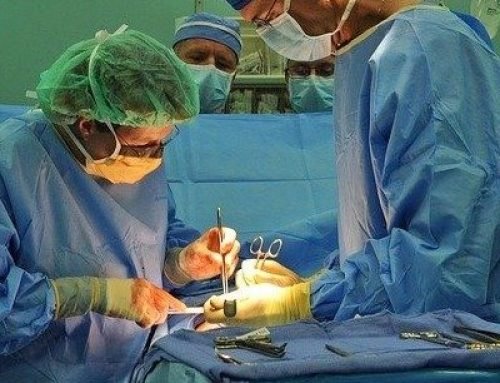Varicocele
[one_half last=”no” spacing=”yes” background_color=”” background_image=”” background_repeat=”no-repeat” background_position=”left top” border_size=”0px” border_color=”” border_style=”” padding=”” class=”” id=””]
What is a varicocele?
A varicocele is a variation of normal anatomy in which veins in the scrotum (the sac that holds the testicles) become enlarged and sometimes even visible. It usually is first found at puberty and is much more common on the left side than on the right side. Sometimes it occurs on both sides.
What causes a varicocele?
Doctors aren’t sure what causes it. In almost all cases, males are born with this condition but it doesn’t become apparent until puberty when there is an increase in blood flow to the genitals.
How common is it?
It is relatively common, occurring in about 15% of adult males.
How is it detected?
A varicocele is found by physical exam while the man is standing. It is much less prominent and may disappear while lying down. An ultrasound is not required to diagnose a varicocele. A varicocele that is shown on ultrasound but cannot be felt on physical exam is called a subclinical varicocele.
Is a varicocele harmful?
In most men, varicocele is just an anatomical finding of no clinical significance. However, a varicocele can lead to reduced fertility or scrotal pain. Less than half of men with varicocele have a reduction of sperm count and/or sperm motility (sperm activity), reducing their reproductive potential. Less than 5% of men with this condition have pain in the scrotal sac due to the varicocele.
Varicoceles do not cause any other health problems.
[/one_half][one_half last=”yes” spacing=”yes” background_color=”” background_image=”” background_repeat=”no-repeat” background_position=”left top” border_size=”0px” border_color=”” border_style=”solid” padding=”” class=”” id=””]
How can a varicocele cause infertility?
It is not known how a varicocele might cause infertility. The most popular theory is that it elevates the temperature of the scrotum because of dilated veins and pooling of blood.
When should a varicocele be treated?
Men with infertility and an abnormal semen analysis may consider varicocele treatment. Men with a normal semen analysis do not need to have its treatment. Men who have pain associated with a this can consider its treatment. A subclinical varicocele does not require treatment.
How is a varicocele treated?
The most common treatment is surgery. An incision is made in the groin and the spermatic cord (which contains the vas deferens and blood vessels going to the testicle) is examined. Veins are tied off while arteries, the vas deferens, and lymph vessels are left alone. This surgery is done as an outpatient procedure under either general or local anesthesia.
Two-thirds of men see improvement in their semen analyses and about 40% can achieve a pregnancy. An alternative to surgery is embolization, performed by a radiologist. During embolization, the radiologist uses a catheter to put a coil or fluid in the vein to block blood flow through the vein.
What are the risks of varicocele surgery?
Serious complications are rare. Risks include bleeding, infection, injury to the testicle, blood clots in the legs, and the risks of general anesthesia. About 10%- 15% of men who have this surgery will have a recurrence or persistence of varicocele after surgery.
Revised 2014
For more information on this and other reproductive
health topics, visit www.ReproductiveFacts.org
[/one_half]



Leave A Comment